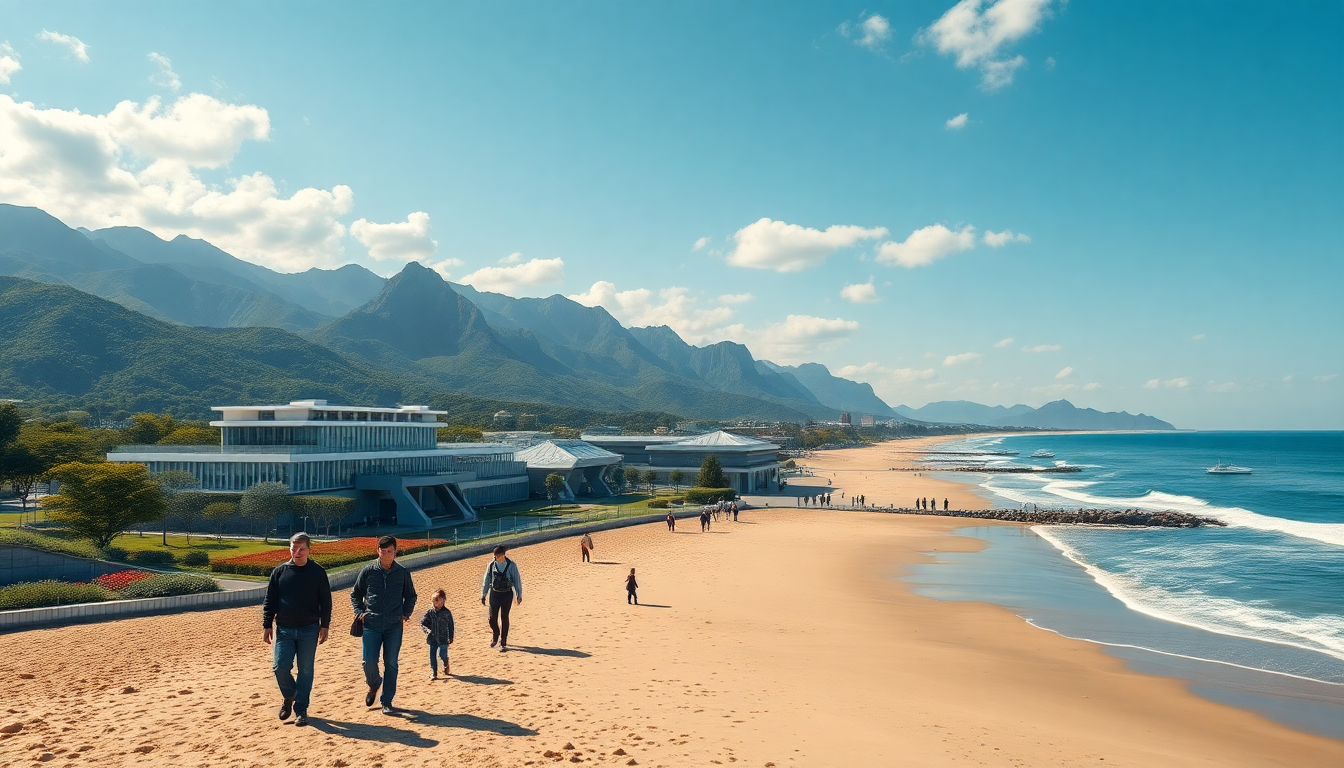Table of Contents
North Korea has made a bold move to breathe new life into its tourism industry with the launch of the Wonsan-Kalma coastal tourist zone. This ambitious project, unveiled in a lavish ceremony led by leader Kim Jong Un, reflects the regime’s desire to position the country as a key player on the global tourism stage.
But despite the fanfare, what does the future hold for foreign tourists looking to visit?
What’s the Buzz About the Wonsan-Kalma Coastal Tourist Zone?
In what state media hailed as “one of the greatest successes this year,” Kim Jong Un ceremoniously cut the ribbon for the Wonsan-Kalma coastal tourist zone, which stands ready to become North Korea’s largest tourist attraction.
With the capacity to host nearly 20,000 guests, the resort promises a range of activities from swimming and sports to diverse dining experiences. However, this isn’t just about creating a local getaway; it’s a strategic play to boost the country’s economy through tourism.
For now, the resort will cater primarily to domestic tourists, with its grand opening set for next Tuesday. But what about international visitors? The timeline for welcoming tourists from abroad, particularly those from foreign markets, remains unclear. Experts suggest that to recover the hefty investments made in this venture, the regime will eventually need to open its doors to foreign tourists, especially from China.
Investment Insights and Challenges Ahead
The construction of the Wonsan-Kalma resort involves a significant financial investment from the North Korean government. Analysts believe this push is not just about attracting local visitors, but also a preparatory measure to entice international tourists down the line.
However, the country’s previous hesitance to embrace international tourism—largely due to the COVID-19 pandemic and ongoing geopolitical tensions—has created a challenging landscape for recovery.
Despite Kim Jong Un’s high hopes, the reality is that North Korea’s international tourism sector remains stagnant.
The lingering pandemic restrictions, combined with heightened tensions with the United States and South Korea, create substantial obstacles. Moreover, there’s a cautious stance towards foreign tourists, particularly from Western nations, driven by concerns over how negative perceptions might shape public opinion about the regime.
What Lies Ahead for Tourism in North Korea?
Looking to the future, there are hints that the first international tourists might actually come from Russia, reflecting the growing ties between the two nations. The presence of Russian diplomats at the inauguration ceremony highlights this budding partnership. As North Korea aims to position itself as a tourism hub, it may prioritize welcoming Russian tourists first, followed closely by Chinese travelers, given their proximity and existing travel habits.
Unfortunately, the outlook for South Korean and American tourists is not as bright. Experts are skeptical about the immediate resumption of tours from these regions, even with diplomatic gestures from both sides. Under Kim’s leadership, the North Korean government has expressed a commitment to developing more tourist sites nationwide as part of a broader strategy to invigorate the economy.
In conclusion, while the Wonsan-Kalma coastal resort represents a significant leap in North Korea’s tourism ambitions, the road ahead is riddled with challenges. The government’s ability to navigate international relations and health concerns will be critical in determining the success of this initiative and the future landscape of tourism in the Hermit Kingdom.





